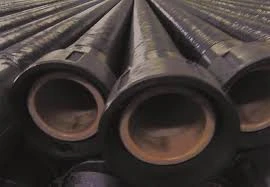
-
 Afrikaans
Afrikaans -
 Albanian
Albanian -
 Amharic
Amharic -
 Arabic
Arabic -
 Armenian
Armenian -
 Azerbaijani
Azerbaijani -
 Basque
Basque -
 Belarusian
Belarusian -
 Bengali
Bengali -
 Bosnian
Bosnian -
 Bulgarian
Bulgarian -
 Catalan
Catalan -
 Cebuano
Cebuano -
 China
China -
 China (Taiwan)
China (Taiwan) -
 Corsican
Corsican -
 Croatian
Croatian -
 Czech
Czech -
 Danish
Danish -
 Dutch
Dutch -
 English
English -
 Esperanto
Esperanto -
 Estonian
Estonian -
 Finnish
Finnish -
 French
French -
 Frisian
Frisian -
 Galician
Galician -
 Georgian
Georgian -
 German
German -
 Greek
Greek -
 Gujarati
Gujarati -
 Haitian Creole
Haitian Creole -
 hausa
hausa -
 hawaiian
hawaiian -
 Hebrew
Hebrew -
 Hindi
Hindi -
 Miao
Miao -
 Hungarian
Hungarian -
 Icelandic
Icelandic -
 igbo
igbo -
 Indonesian
Indonesian -
 irish
irish -
 Italian
Italian -
 Japanese
Japanese -
 Javanese
Javanese -
 Kannada
Kannada -
 kazakh
kazakh -
 Khmer
Khmer -
 Rwandese
Rwandese -
 Korean
Korean -
 Kurdish
Kurdish -
 Kyrgyz
Kyrgyz -
 Lao
Lao -
 Latin
Latin -
 Latvian
Latvian -
 Lithuanian
Lithuanian -
 Luxembourgish
Luxembourgish -
 Macedonian
Macedonian -
 Malgashi
Malgashi -
 Malay
Malay -
 Malayalam
Malayalam -
 Maltese
Maltese -
 Maori
Maori -
 Marathi
Marathi -
 Mongolian
Mongolian -
 Myanmar
Myanmar -
 Nepali
Nepali -
 Norwegian
Norwegian -
 Norwegian
Norwegian -
 Occitan
Occitan -
 Pashto
Pashto -
 Persian
Persian -
 Polish
Polish -
 Portuguese
Portuguese -
 Punjabi
Punjabi -
 Romanian
Romanian -
 Russian
Russian -
 Samoan
Samoan -
 Scottish Gaelic
Scottish Gaelic -
 Serbian
Serbian -
 Sesotho
Sesotho -
 Shona
Shona -
 Sindhi
Sindhi -
 Sinhala
Sinhala -
 Slovak
Slovak -
 Slovenian
Slovenian -
 Somali
Somali -
 Spanish
Spanish -
 Sundanese
Sundanese -
 Swahili
Swahili -
 Swedish
Swedish -
 Tagalog
Tagalog -
 Tajik
Tajik -
 Tamil
Tamil -
 Tatar
Tatar -
 Telugu
Telugu -
 Thai
Thai -
 Turkish
Turkish -
 Turkmen
Turkmen -
 Ukrainian
Ukrainian -
 Urdu
Urdu -
 Uighur
Uighur -
 Uzbek
Uzbek -
 Vietnamese
Vietnamese -
 Welsh
Welsh -
 Bantu
Bantu -
 Yiddish
Yiddish -
 Yoruba
Yoruba -
 Zulu
Zulu
Exploring Innovative Applications of FRP Chemical Products for Modern Industries
Understanding FRP Chemical Products Innovations and Applications
Fiber Reinforced Polymer (FRP) chemical products have emerged as revolutionary materials in various industries due to their superior properties. Defined as composite materials that consist of a polymer matrix reinforced with fibers, FRPs are widely recognized for their strength-to-weight ratio, corrosion resistance, and versatility. These properties make them exceptional choices in sectors ranging from construction and automotive to aerospace and marine applications.
One of the standout features of FRP chemical products is their strength. By combining polymers with materials such as glass, carbon, or aramid fibers, manufacturers can create materials that outperform traditional materials like steel and aluminum in weight-to-strength ratios. This property is particularly advantageous in industries that demand lightweight solutions without compromising structural integrity. For instance, in the aerospace sector, using FRP can lead to significant reductions in fuel consumption and emissions by lessening the overall weight of aircraft.
Understanding FRP Chemical Products Innovations and Applications
The manufacturing process of FRP chemical products involves several techniques, including pultrusion, filament winding, and resin transfer molding. Each method offers unique advantages depending on the required specifications of the final product. For instance, pultrusion allows for the continuous production of specific cross-sectional shapes, making it ideal for structural applications. Meanwhile, filament winding is commonly used for creating complex geometries, such as pressure vessels and pipes.
frp chemical product

In addition to structural applications, FRP chemical products also find use in various niche markets. The automotive industry, for instance, is increasingly incorporating FRP components to enhance vehicle performance and fuel efficiency. Lightweight FRP parts can improve handling and acceleration while also reducing production costs due to decreased energy expenditure during the manufacturing process.
Moreover, the renewable energy sector has also embraced FRP materials, particularly in wind turbine production. The blades of modern wind turbines are predominantly made of FRP, which is essential in achieving the required aerodynamic performance and structural stability needed for efficient energy generation. The lightweight nature of FRP contributes to longer blades, which can capture more wind energy and enhance overall productivity.
Despite these advantages, the adoption of FRP chemical products is not without challenges. One of the primary concerns is the environmental impact of their production and disposal. The resins used in FRPs are often derived from petroleum sources, raising questions about sustainability. However, ongoing research is aimed at developing bio-based resins and recycling methods to mitigate these concerns, making FRP even more appealing as an environmentally friendly material.
In conclusion, FRP chemical products represent a significant advancement in material science, offering unique properties that cater to an array of applications across diverse industries. Their combination of lightweight strength, corrosion resistance, and adaptability positions them as critical components in the future of construction, transportation, and energy production. As manufacturers continue to explore innovative ways to enhance FRP materials and address environmental concerns, the potential for widespread adoption and application of FRP chemical products is vast and promising.









